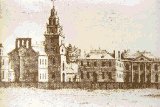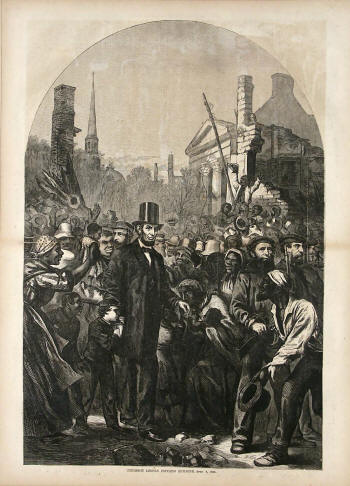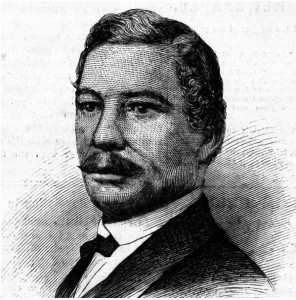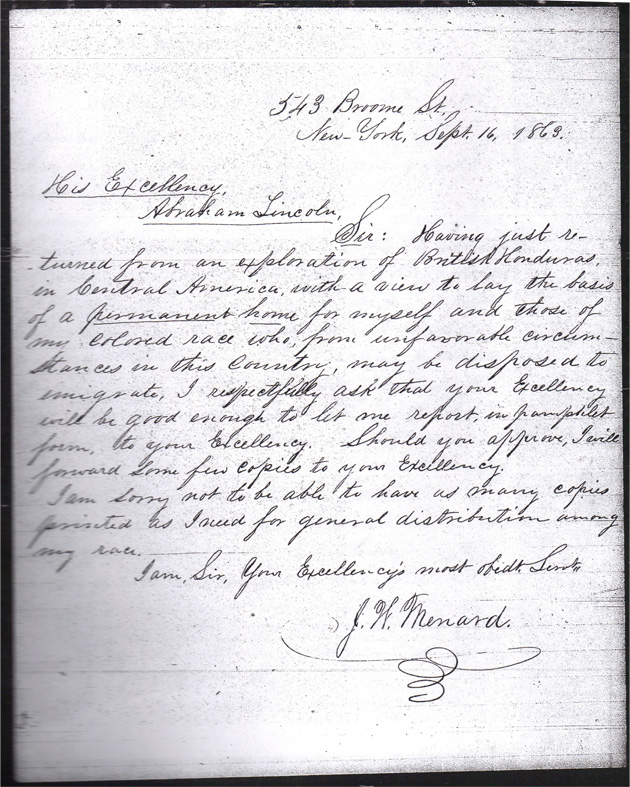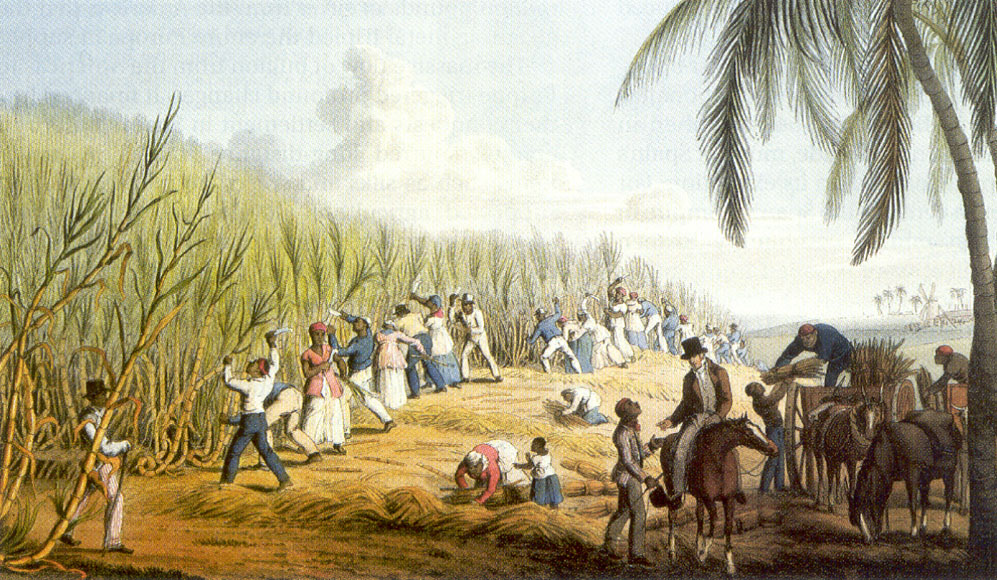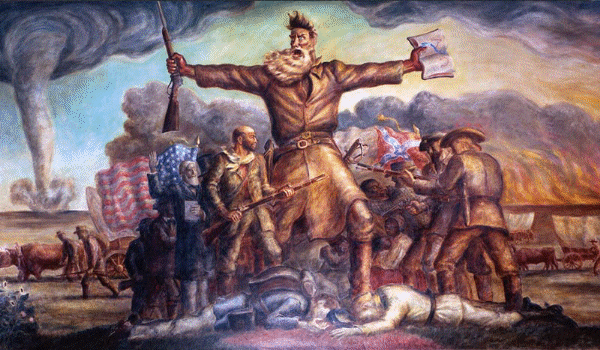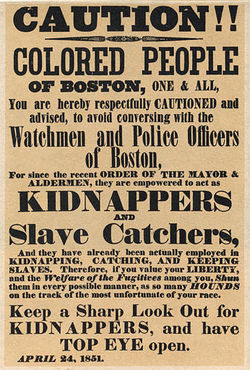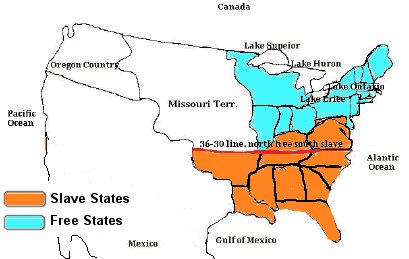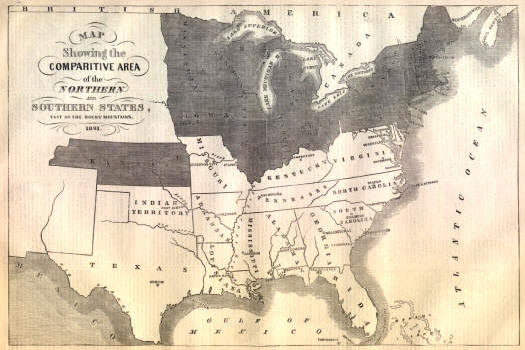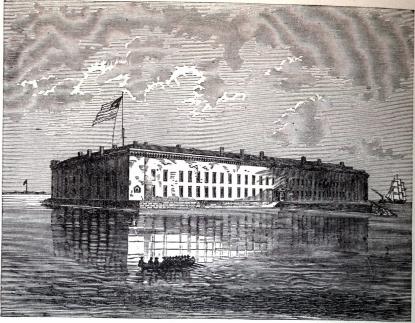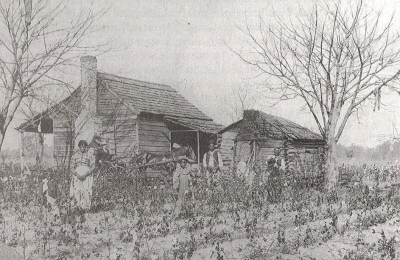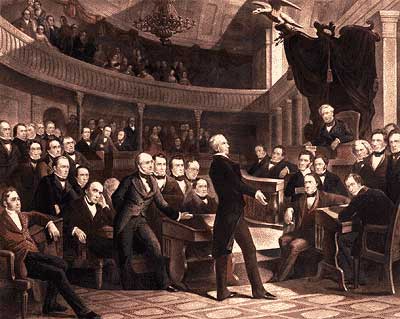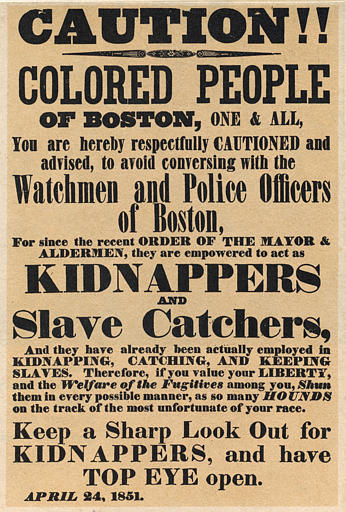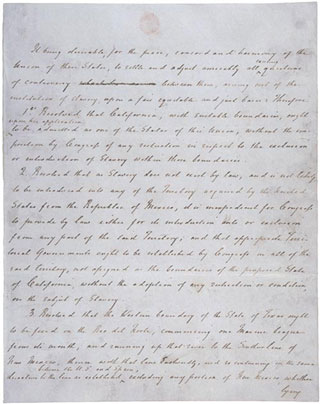This blog is to be used by BelThorne designers to post their finished artist statements and images for presentation.
Friday, April 29, 2011
Devlin's and Arturo's research for civil war rifles sarah's class
Shamu and Burt-Michaels room-Music and drummer boys during the civil war
Here are a few helpful links to finding instruments, songs, and facts on drummer boys and music during the Civil War Era.
Tuesday, April 26, 2011
Slavery during the war Stephanie Indigo's class
My theme for my second quilt project is slavery. Slavery was very
important because it caused the south to want to secede, which made the
north fight to keep the country together. Slavery is why the war began;
but think carefully about this, because this was NOT why the war was
fought. Not at first, at least.
The main picture on my quilt square is of the Emancipation Proclamation. This of course was a very important part of the war, and a vital contributor to my subject. Many people may think its silly, stupid even, to have declared a law over all parts of a country you cannot control. It just wastes paper. But Lincoln had a plan. The Proclamation not only stated that slavery was against the constitution, but it also gave the Union something to fight for, and, most importantly, it made France and England support them. For they were firmly set AGAINST slavery, and to support the south was to go against their firm beliefs.
In the middle of the Proclamation, there is a summery of it. To each side, there is either an S or a N, to represent the different views of the north and the south. under each letter there is a picture of chains, representing slavery.
On the north's side, there is a red X through it, show that they are against slavery. Also on the norths' side, there are the words, "FIGHT FOR THE CONSTITUTION". There are also two men by the dividing line between the north and south. One is black. The other is white. This stands for how in the north, blacks were allowed to fight in the war. Opposite the men are two other men. They are both white. This stands for how only whites could join the army in the south, because the blacks were enslaved. In between the soldiers, there is a gray sword (confederate) and a blue sword (union) clashing. this symbolizes the war itself.
On the south's side, there is black man holding the Proclamation and declaring that he is free. Below this there is the statement "FIGHT FOR SUCCESSION!" Which shows how the Proclamation made the south even angrier and more determined to keep slavery in place.
The main picture on my quilt square is of the Emancipation Proclamation. This of course was a very important part of the war, and a vital contributor to my subject. Many people may think its silly, stupid even, to have declared a law over all parts of a country you cannot control. It just wastes paper. But Lincoln had a plan. The Proclamation not only stated that slavery was against the constitution, but it also gave the Union something to fight for, and, most importantly, it made France and England support them. For they were firmly set AGAINST slavery, and to support the south was to go against their firm beliefs.
In the middle of the Proclamation, there is a summery of it. To each side, there is either an S or a N, to represent the different views of the north and the south. under each letter there is a picture of chains, representing slavery.
On the north's side, there is a red X through it, show that they are against slavery. Also on the norths' side, there are the words, "FIGHT FOR THE CONSTITUTION". There are also two men by the dividing line between the north and south. One is black. The other is white. This stands for how in the north, blacks were allowed to fight in the war. Opposite the men are two other men. They are both white. This stands for how only whites could join the army in the south, because the blacks were enslaved. In between the soldiers, there is a gray sword (confederate) and a blue sword (union) clashing. this symbolizes the war itself.
On the south's side, there is black man holding the Proclamation and declaring that he is free. Below this there is the statement "FIGHT FOR SUCCESSION!" Which shows how the Proclamation made the south even angrier and more determined to keep slavery in place.
Monday, April 25, 2011
Talullah Blanco 3/5 compromise Artist Statement
THREE-FIFTHS COMPROMISE
ARTIST STATEMENT
This is a drawing for the Quilting the Nation piece. The blue in the North represents moving forward and the future, the red in the South represents the deaths that will come and blood that will come with those deaths. The Declaration of Independence is covered and dwarfed by the Constitution. The Declaration of Independence states that all men are created equal, but the 3/5 Compromise seems to be the reverse of that belief. The Constitution in the background ties the three-fifths compromise back to The Constitution. The five people in the front represent the total population of slaves in the South, the Xs crossing out two of those people tells us about how only three-fifths of the total population of slaves in the South counted in The House of Representatives.
ARTIST STATEMENT
This is a drawing for the Quilting the Nation piece. The blue in the North represents moving forward and the future, the red in the South represents the deaths that will come and blood that will come with those deaths. The Declaration of Independence is covered and dwarfed by the Constitution. The Declaration of Independence states that all men are created equal, but the 3/5 Compromise seems to be the reverse of that belief. The Constitution in the background ties the three-fifths compromise back to The Constitution. The five people in the front represent the total population of slaves in the South, the Xs crossing out two of those people tells us about how only three-fifths of the total population of slaves in the South counted in The House of Representatives.
Dred Scott artist statement -Ian, Deborah
Heath and I made a quilt square on the injustice blacks face in court, or more specifically on the Dred Scott case. Dred Scott faced the injustices, and came out as the winner. Dred Scott was a black slave who traveled with his owner in several free states. After his master’s death he sued for freedom for himself, his wife and their two kids. He lost his first case, but a retrial was called due to illegal evidence. Scott won the second case and therefore, freedom for his family (and himself). As you look at our quilt square you first see a giant gavel (though you might think it is a hammer). Riding on top of the hammer is a judge. In the gavels path are two fleeing blacks, showing that they lost. The ground is red symbolizing the blood and tears shed by blacks that face court or other injustices. Below the picture is the words “The Gravel of (in)justice”. What we meant by that is that the gravel of justice only represents justice for rich white men, for blacks it represents injustice.
Dred Scott - Ian and Heath
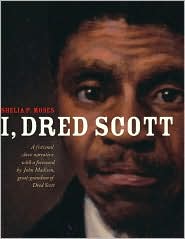
The cover to a book featuring Dred Scott.
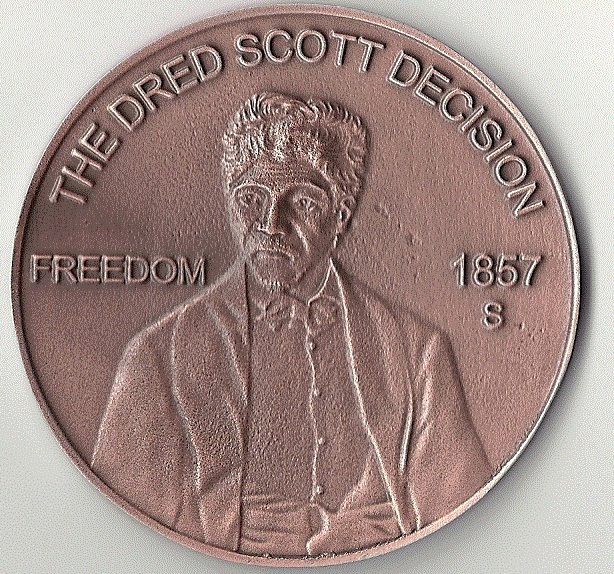
A coin with a picture of Dred Scott and the word "Freedom".

Dred Scott's grave, with pennies (regular ones) on top and (though you can't see it on this particular picture) an american flag next to it.

This is an article in the newspaper Frank Leslie's Illustrated on Dred Scott.

This is Roger B. Taney. He was the judge that ruled against Mr. Scott. However Scott was granted freedom three months after by his original owners, the Blow family.
Marley Tariffs Deborahs class
artist statement
tariffs are a tax added on imported and exported goods. (also known as a sales tax)
our quilt square shows the sepparation between north and south, but it also shows the trade routs to europe. the square shows that the trade routs from the south were a LOT longer then the trade routs from the north. an added expense: the north had alot more factories that manufactured alot of goods, but the south was alot more agracultural and so they had to import and export alot of things, resulting in the added taxes. it was really nice for the north to have control over the tariffs, because the government got money from the south for protection and other needs. another feature on our quilt square is the NAFTA routes. NAFTA is a trade agreement between canada, the US, and mexico where there is no tariffs on any of the goods that travel between those countries. the problem with nafta is that the usa companies moved to mexico because mexico doesnt have quite as many laws as we do here, and they dont have to pay any extra tarrifs to import the goods to the usa.
tariffs are a tax added on imported and exported goods. (also known as a sales tax)
our quilt square shows the sepparation between north and south, but it also shows the trade routs to europe. the square shows that the trade routs from the south were a LOT longer then the trade routs from the north. an added expense: the north had alot more factories that manufactured alot of goods, but the south was alot more agracultural and so they had to import and export alot of things, resulting in the added taxes. it was really nice for the north to have control over the tariffs, because the government got money from the south for protection and other needs. another feature on our quilt square is the NAFTA routes. NAFTA is a trade agreement between canada, the US, and mexico where there is no tariffs on any of the goods that travel between those countries. the problem with nafta is that the usa companies moved to mexico because mexico doesnt have quite as many laws as we do here, and they dont have to pay any extra tarrifs to import the goods to the usa.
3/5 Compromise Sammi Redder Deborah
http://www.buzzle.com/articles/three-fifths-compromise.html
The southern states got more power in the House of Representives because of the 3/5 Compromise and that the 3/5 compromise wasn't made to abolish slavery only as a compromise to keep moving forward as a country.
http://www.buzzle.com/articles/what-was-the-35compromise.html
This website gives a little bit of background knowledge about how the slaves were counted as 3/5 of a person. In the Constitution the 3/5 Compromise is written as this:
"Representatives and direct Taxes shall be apportioned among the several States which may be included within this Union, according to their respective Numbers, which shall be determined by adding to the whole Number of free Persons, including those bound to Service for a Term of Years, and excluding Indians not taxed, three fifths of all other Persons."
http://law2.umkc.edu/faculty/projects/ftrials/conlaw/convention1787.html

http://law2.umkc.edu/faculty/projects/ftrials/conlaw/convention1787.html
We have compromised about race since the beginning.
These pictures show the Philadelphia Convention, the building it was held in and the signing of the Constitution which included the 3/5 Compromise.
The 3/5 Compromise was also brought up in the Articles of Confederation which stated that taxes should be by land value, but many states offend undervalued their land to reduce taxes. A special committee suggested counting taxes by population not by land value. The suggestion then led up to the 3/5 Compromise, which was a compromise of whether or not slaves should be counted as people or property.
In section two, The Constitution clearly states that all free persons will be counted when determining taxes and the number of representatives in the House, the Indians will be excluded and 'all other persons' who would obviously be slaves are only counted as 3/5 of a person.

Artist Statement
Our quilt piece shows the north and south split up by five people, two of which are crossed out with black X’s because they only count as three fifths of a person. Placed behind the country is the US Constitution representing support for the 3/5 compromise. Behind the US Constitution is a small sliver of the Declaration of Independence being obscured and seemingly overshadowed by the US Constitution. The Declaration states that all men are created equal and the 3/5 Compromise is the opposite of what it says. The blue in the north represents the Union and the red in the south shows the main color of the Confederate flag. The five dark skinned people are in between the red and blue, splitting them apart. The separation also shows how the north and south are being pulled apart because of this issue of slavery and fair treatment.
madeline's posts and artist statement- deborah's office
Thursday, April 14, 2011
abolitionist movment-madeline & Clairissa-deborah nass
this website tells you about events that took place during the civil war and what affects it had on slavery. It has some good images!
madeline's artist statement:
Our quilt square is showing how the abolitionist movement helped lead up to the war. The chains connecting North and South are breaking apart and south is falling off, because it is representing the southern states suseeding from Union.Abarham Lincoln's hat is on the north because Lincoln was an Abolitionist. (South suseeded from union because they thought that he was an abolitionist, tearing the nation apart.) On the north side, there are black and white polk-a-dots. These represent the people. President A. Lincoln made the law that slaves were free. But states like Texas thought that they didn't want to do that yet. Or they hadn't heard about it. If Lincoln had not been an abolitionist, the south would have not suseeded from union and that would be one less reason that North and South had split up.
http://www.sonofthesouth.net/slavery/abraham-lincoln/abraham-lincoln-portrait.htm
http://www.sonofthesouth.net/slavery/index.html
Both these sights have great photos:
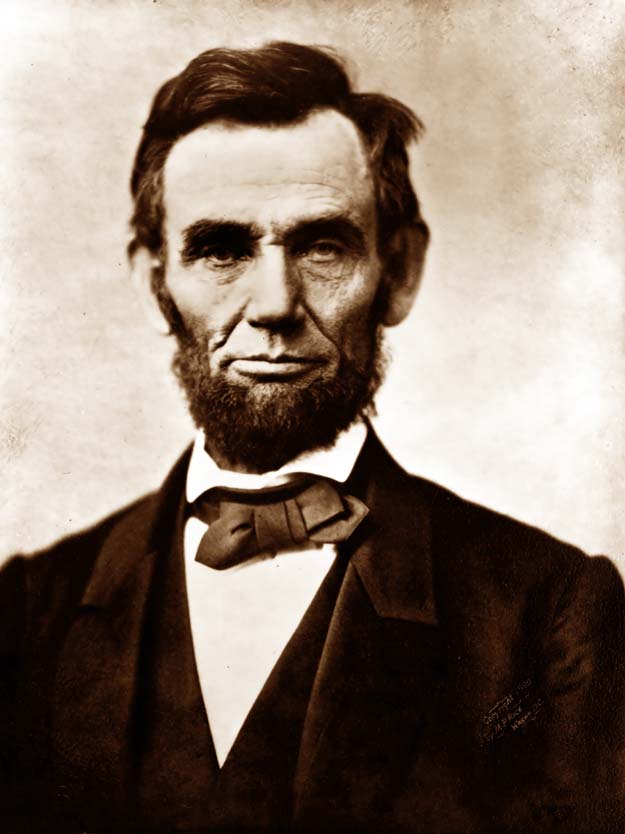
http://patdollard.com/wp-content/uploads/2010/10/emancipation-proclamation.jpg
If you click on this link you can see the emancipation proclomation. I'm sorry that I cant put it onto this post.
Sunday, April 24, 2011
Artist statement-joe-deborahs class
My quilt square topic is Robert E. Lee. it shows 3 silhouettes. the one in front is Lee. the other two are plantation owners. Lee is holding marionets that specific soldiers from the war. This represents how highly Lee was ranked and how well he controlled the men under him. there are crosses coming from the smaller silhouettes. these represent the deaths that each man was responsible for during his time in the civil war. the crosses and smaller silhouettes are bleeding to emphesize the darkness of war and how lives and deaths are very important.
Tariff Artists Statement-Oliver A.-Deborahs Class
This is a picture of imported and exported goods to and from Europe. Also NAFTA on the left. The ongoing arrows are pointed to Canada, Mexico and US for NAFTA. NAFTA is a fairly new agreement that lets the three countries trade without a tariff. The ongoing back and fourth between the South and Europe and the North and Europe explains how they imported and exported goods. On the arrows are ships that are exporting and importing goods. The North and South flags are exporting goods to Europe and the European flag is exporting goods to the North and South. For NAFTA there are packages that say no tariff. The significance of this quilt piece is to show that tariffs meant a lot to the war, that is one of the reasons it happened. Tariffs were protective to countries interests and revenue, so without them their goods would not be as safe.
Wednesday, April 20, 2011
Abolitionist Movement-Clairissa and Madeline-Deborah
http://www.newworldencyclopedia.org/entry/Walker,_David_(abolitionist)

David Walker, Son of a slave, Who sold clothes in Boston wrote a pamphlet called Walker's Appeal. This had urged Black's to fight for their freedom. The Appeal made southern slaveholders so upset that one of them offered a reward for David Walker's murder or capture. One summer day in 1830 Walker was found dead near the doorway of his shop.

David Walker, Son of a slave, Who sold clothes in Boston wrote a pamphlet called Walker's Appeal. This had urged Black's to fight for their freedom. The Appeal made southern slaveholders so upset that one of them offered a reward for David Walker's murder or capture. One summer day in 1830 Walker was found dead near the doorway of his shop.
The Cotton Gin: artist’s statement by Nathan Hamilton
Our quilt piece is about Eli Whitney’s cotton gin. On the
bottom of the square, there is a picture of a cotton field. Cotton fields were
profitable for the white slave owners and were common in the south. On the
right side, you can see a cotton gin. In the row of trees behind the cotton
field, you can see faces in the trees. These faces represent the pain and
suffering of the many slaves who were forced into bondage by white slave
owners. In between the trees is the word hope. It represents the hope of the
slaves that they will one day be free.
Abolitionist Movement-Clairissa and Madeline-Deborah
http://philmagness.com/?page_id=117
On September 16th, 1863, Menard sent a letter to A. Lincoln asking to write about the British Honduras being a potential setting for colonization. (Bottom Right)
James Willis Menard, A free black newspaperman who supported black repatriation to Africa and had worked as a clerk for James Mitchell at the Department of the Interior. (Top Left)
On September 16th, 1863, Menard sent a letter to A. Lincoln asking to write about the British Honduras being a potential setting for colonization. (Bottom Right)
Tariffs-Julia Glancy-Deborah's Class
Artist Statement
By Julia Glancy
Tariffs are taxes on imported and exported goods. Tariffs were created so the South would start buying manufactured goods from the North. The arrows from the North to Europe and the South to Europe show how the the country was divided on the matter of tariffs. Arrows from Canada all the way down to Mexico represent NAFTA. NAFTA is the National Free Trade Agreement. NAFTA has created free trade between Canada, The United States and Mexico. What once divided a country is now pulling countries together.
By Julia Glancy
Tariffs are taxes on imported and exported goods. Tariffs were created so the South would start buying manufactured goods from the North. The arrows from the North to Europe and the South to Europe show how the the country was divided on the matter of tariffs. Arrows from Canada all the way down to Mexico represent NAFTA. NAFTA is the National Free Trade Agreement. NAFTA has created free trade between Canada, The United States and Mexico. What once divided a country is now pulling countries together.
Miette Isaac Christina - Sarah's Office
Isaac
Me and Christina and Miette did Stephen A. Douglas he was a
American politician he was nominated to be president and went up against
Abraham Lincoln. Llinocln won the debate.Abolitionist Movement-Clairissa Krieger-Deborah
The Abolitionist Movement is what my quilt square is all about. In the quilt piece Madeline and I put a breaking chain supporting the North and South with Abraham Lincolns top hat on the North; A border showing famous Abolitionists. This represents how the North and South did not really trust and agree with each other. Also we tried to uphold the fact that on January 1st, 1863 Abraham Lincoln passed the Abolitionist Movement. In our world today this piece represents some standing connection between the North and South, Also the importance of what affects these famous Abolitionists had on America. Recapping on this piece means that I mainly tried to obtain the fact that this quilt piece represents the North and South being held together by Abraham Lincolns movement.
Frederick Douglas - Claire Miller-Hughes and Frank Sprints - Michael's Office
Artist Statment
In this picture, the north and south are divided into the colors blue and red, with the brown section being the territories. To represent slavery in the south, there are chains all over it. The abolitionist movement is represented by a pair of scissors. The scissors are trying to cut the chains, as if to cut away slavery. This abolitionist movement was so important because if it hadn’t happened and hadn’t stopped slavery, then who knows what the United States would be like right now. It also affected the countries that they shipped the slaves from because they didn’t have to worry about any more people coming for them.

Tuesday, April 19, 2011
Slave Trade-Emerald Seale-Michael's Office
My theme is slavery. My quilt shows how slavery was a HUGE reason that the civil war happenened. It shows some history on the U.S., too. It shows what the North felt and what the South felt and what the slaves felt. The bars of the slave's prison cell are the red stripes on the American flag, and the star in the corner is torn in half and bleeding to show the split country. The Union (North) hand is shown breaking the bars and freeing the slave. The Confederates (South) hand is shown glueing the bars back together, trapping the slave. This all shows how slavery split up the U.S. and caused the Civil War.
Religion befor the Civil War by Stephanie
For my first quilt project, I did religion. On my quilt, the main drawing is a cross, hence Christianity, the main religion of the age. In the middle of the cross, their is a broken American flag, showing off the overall feeling of the 1860's. One side is blue (the Union's color) while the other side is gray and black (the Confederate's color). On one side of the cross, there is a broken, ragged line where part of the cross has broken away. In the piece, there is a symbol with a lit candle. This is the Unitarian sign, who at this time began the Unitarian movement. This was a movement to break free of Christianity, which was much stricter than it is now. On the bottom of the quilt, there are two women praying. One is praying for peace and for a good crop. The other is wondering whether her son should go to war or not. By the first woman there is a white circle. Below is a line. Then there is a black circle. the white circle is saying, "God made us higher." This stands for how many whites thought that God had made slaves purposefully unequal to whites. In the corner there is a praying slave. He is asking God to set him free. In the opposite corner there are two churches. One is for slavery. One is against it. Below this is a man holding a torch to the cross. This shows some people did not like Christianity. The overall purpose of this Quilt and subject in the war was that people used religion as an excuse to own slaves and they prayed to God to see if their sons should go to war, which was a big deciding factor. Also, because of the difference in beliefs, this pulled the north and south farther apart.
Artist Statement-North vs South Economy-Madeleine
Artist Statement
Title: Divided Economy
Year: 201
 This quilt piece is of the economy with two sides. One side represents the North the other the South and on each side is the states that represented that side. I put the states into the picture because I though it helped to show what areas and places things ran through and what side was being shown. The picture help give an idea of the cotton fields and the railroads so we see how much it had changed. The picture of the house is to show how fancy and time worthy houses were and that is showed in the pictures. This quilt piece relates to history because when the Civil War was going on both sides separated leaving both sides with there own ways of doing things and I think this helps to show how different the sides where and how they where the same.
This quilt piece is of the economy with two sides. One side represents the North the other the South and on each side is the states that represented that side. I put the states into the picture because I though it helped to show what areas and places things ran through and what side was being shown. The picture help give an idea of the cotton fields and the railroads so we see how much it had changed. The picture of the house is to show how fancy and time worthy houses were and that is showed in the pictures. This quilt piece relates to history because when the Civil War was going on both sides separated leaving both sides with there own ways of doing things and I think this helps to show how different the sides where and how they where the same.
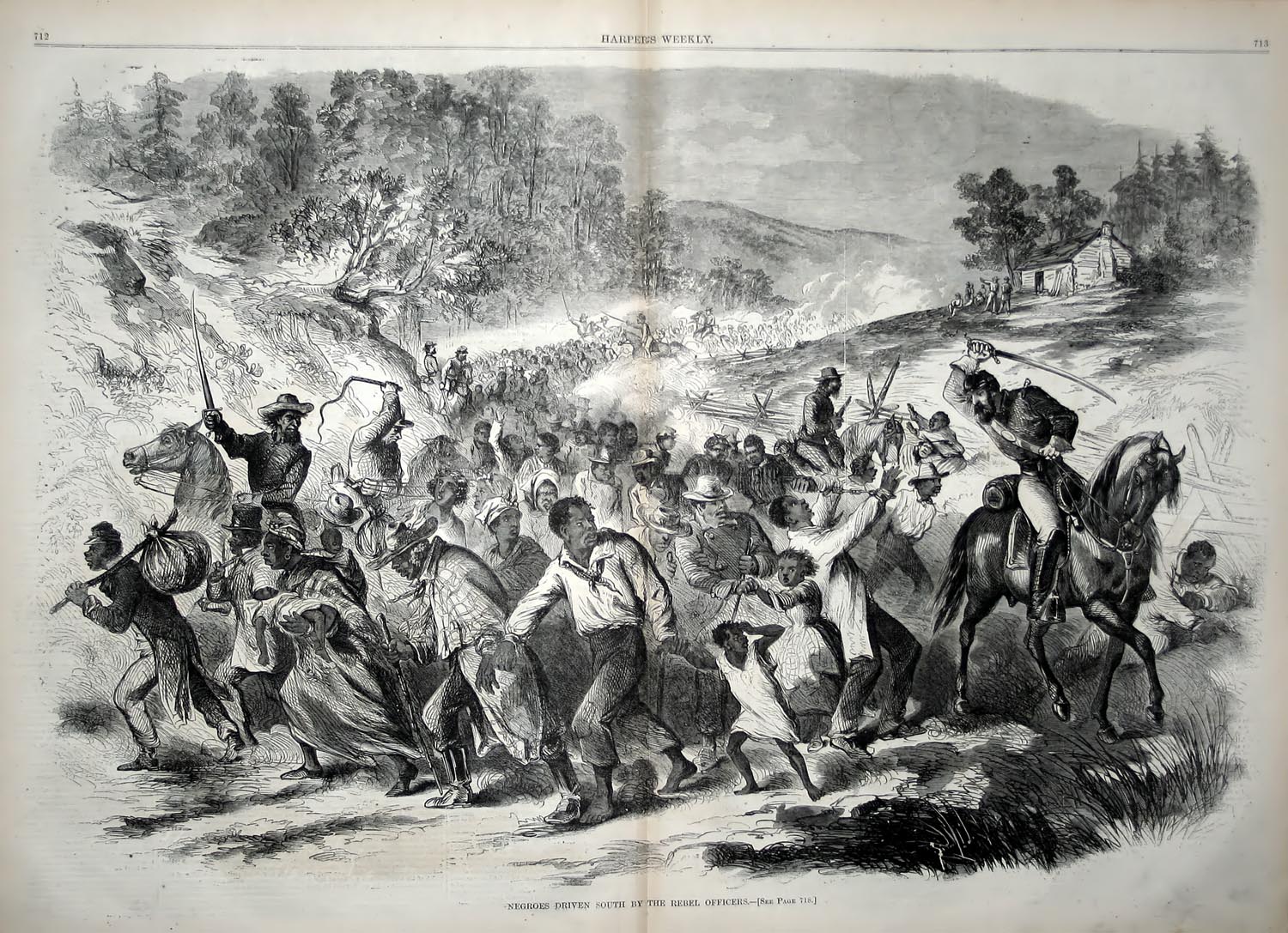
Artist statement-Meg- Deborah
This is a quilt square that represents the time of the Bloody Kansas era, when Kansas had to decide for itself to be a free or slave state after
the Nebraska act in 1854. On this quilt square,
the crack in the middle represents how the state was
in two pieces. There were thousands of pro-
and anti-slavery supporters that had their own opinion if whether the state
became a slave or free. We put the
bullet in the middle of the state because it represents the violence that
occurred in the event. About 56 people died and many were wounded. The chains
and the bird represent the slaves and the whites. How slaves were chained up
and had to work with out pay and the whites
could do what they wanted, without any rules or owners. The significance of this quilt piece is to show that the
decision that Kansas had to make affected
everyone’s life. The slaves in Kansas were eventually freed because they entered
the Union as a anti slavery state in 1861,
seven years after the Kansas-Nebraska act. Kansas became in Unity with the rest of the United States of America.
religion for quaker and the south by maya deborah class
Me and and Amanda's quilt square represents the religion symbols for the Quakers and the south. They believed in to different things. The Quakers belied that every person should be treated equal and that there should be no slaves. The south belied that slavery was right and that they should be able to have slaves. With the two not agreeing about that and there was many different things happening with religion it helped start a war between the nation.
Marina Rowan - Sarah's Office
Quilting
The Nation Artist Statement
Vermont's
abolishment of slavery proved to be a significant event in that time.
It was the first colony to abolish slavery in the United States so it
brought a lot of discussion up. Our quilt piece shows the turmoil it
brought up.
We
have an outline of the United States and Virginia popping out. Around
it there are people shaking their fists and looking angry. There are
also slaves with open shackles.
Our
quilt piece helps us learn about who we are today because it shows us
the beginning of a big part of our history. It shows us the beginning
of the Civil War and how it started.
This
quilt piece is important to “Quilting the Nation” because it
tells us about one of the first colonies that started to abolish
slavery, which lead to the Civil War and then on to ending slavery in
the South.
John Brown's Raid - Katrina Corwin, Emma Rubino - Michael's Office
Fugitive Slave Act, Mikah and Desmond, Michaels office
This is OUR artist statement!!!!!!!!!!!
Hello other employees! It is I, Jason Ramsey of Mister Bossman Jansa’s office! I am here with Devil’s Son Rickford. This is our Artist Statement.
My topic was how the Northern technology affected the South. The “gears” of the South are separating from the larger and more industrial “gears” of the North. This symbolizes secession and how the North was more mechanical then the South. The smoking US map represents how the Confederacy could not function well without the Union, and vice versa. It also symbolizes how if something is destroying or is at war with itself, it can’t function for a time until it re-bonds or fixes itself.
My topic was how the Northern technology affected the South. The “gears” of the South are separating from the larger and more industrial “gears” of the North. This symbolizes secession and how the North was more mechanical then the South. The smoking US map represents how the Confederacy could not function well without the Union, and vice versa. It also symbolizes how if something is destroying or is at war with itself, it can’t function for a time until it re-bonds or fixes itself.
The Missouri Compromise Artist Statement - Lily F. and Lilly D. - Michael's office
Lily F's Artist's Statement:
My piece is about the Missouri Compromise in 1820. the split down the middle represents the split between the North and the South, and how they were so divided. With Missouri in the center and on both sides of the split, it shows how it was at an indecision and disagreement whether to be a slave or free state. But with the chains pulling Missouri from both the North and the South side, you can see that the both sides of the US were having a "tug-of-war" over the state. In the upper corner, the handshake signifies the compromise itself - and on either side of the handshake, you see the results - the North with Maine, and the South with Missouri.
Lilly D's Artist Statement:
My quilt piece is about the Missouri Compromise that happened in the time of 1820. The Missouri Compromise was when the division between the North and South was very distinct and they were both very different groups. When the state Missouri was founded the North and South both wanted the state for themselves and were at a disagreement with each other about owning that specific land. The conflict was that the North wanted Missouri to be a freed slave state and the South wanted Missouri to be a enslaved state. In my piece the chains that are pulling Missouri to the North and South represents the conflict between the two, the handshake in the left top represents the compromise and the establishment they made with each other, the handcuffs on the bottom represents the south being an enslaved area and lastly the state of Maine was owned by the north and the South owned Missouri in the end.
This is a picture of the Missouri Compromise itself.
This picture is of the Missouri Compromise before it happened.
This is the final results of the Missouri Compromise
Ft. Sumter artist statement-Sofia and Kaia
This piece is an assignment
about the Civil War. This particular one is about the first shots of the Civil
War at Ft. Sumter. The two flags of the Union and the Confederates represent
the conflict of the two opposing sides. The picture of South Carolina represents
the fact that Ft. Sumter is in South Carolina. President Lincoln was a big part
in the civil war so he’s in there too. If the Civil War didn’t happen we would
still be a divided nation and we might still have slavery. This quilt piece
just shows some important symbols of Ft. Sumter and the Civil War.
Audrey & Grace-North and South Geography- Michaels Office
Artist statement: The piece of art shown here represents the geography between the north and the south during the pre civil war. This is showing that though the two lands are both completely seperate each of them rely on one another. The south grew cotton which was sold to the north who made it into fabric and clothes then sold it back to the south, both of them working together to live their lives. We have represented this message through ying and yang, both the the complete opposite yet connected in one way or another. This predicament is happening everywhere in the world today but we have learned from our mistakes and improved upon them. this quilt piece is presenting both of the landscapes of the north and south. The north has very little flatlands and a lot of mountains. Not the ideal place for farming. While the south on the other hand has pretty much only flatlands, a few hills, small towns, and large houses. Each land is connected but was torn apart by opinion.
Compromise of 1850- Jacques Rapaport- Michael's Office
Artist Statement
This is a representation of the Compromise of 1850. The man in gray with a dog is a southern slave catcher going into northern territory. The person in blue is a is an abolitionist that is protecting the runaway slave. This is a representation of the Fugitive Slave Act. The highlighted border line on Texas displays the border that the Compromise made them have. This is important to day because now there is a Mexican immigration issue. The Fugitive Slave Act really upset some people in the north because they were against slavery. California is colored blue because they entered as a free state. The people have guns to show the conflict over the Fugitive Slave Act.
This is a representation of the Compromise of 1850. The man in gray with a dog is a southern slave catcher going into northern territory. The person in blue is a is an abolitionist that is protecting the runaway slave. This is a representation of the Fugitive Slave Act. The highlighted border line on Texas displays the border that the Compromise made them have. This is important to day because now there is a Mexican immigration issue. The Fugitive Slave Act really upset some people in the north because they were against slavery. California is colored blue because they entered as a free state. The people have guns to show the conflict over the Fugitive Slave Act.
Subscribe to:
Posts (Atom)




